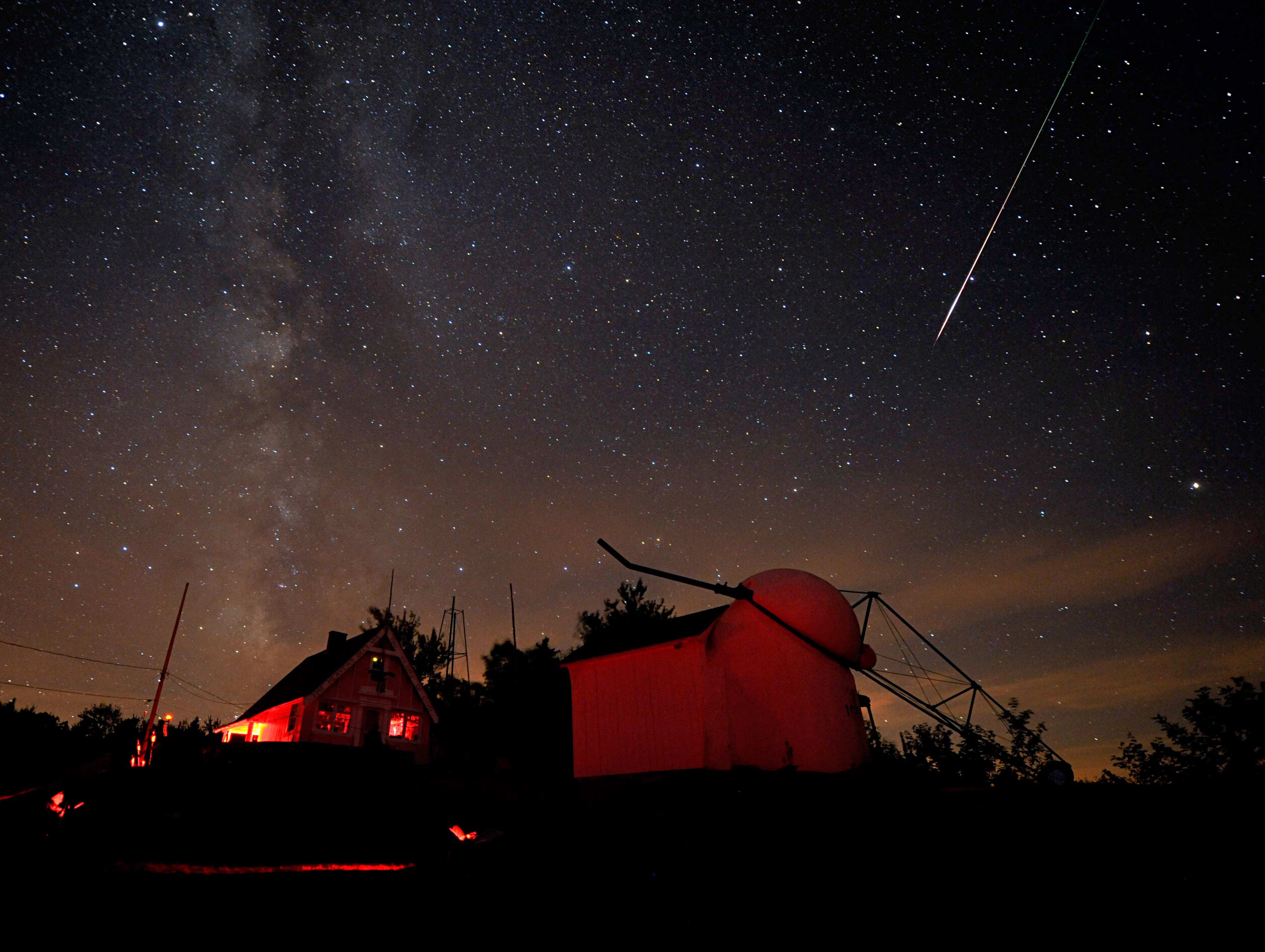"Put out the lawn chair, set the alarm and maybe bring something
to wet your whistle while you gaze into the nighttime sky — the year's
best shooting star show has started.
"August's annual Perseids meteor shower peaks Sunday and Monday, promising perhaps 70 meteors an hour those evenings.
"'The Perseids are the good ones,' says meteorite expert Bill Cooke of NASA's Marshall Space Flight Center in Huntsville, Ala.
. . . . .
"You will have to stay up late to see the Perseids at their peak; the
best viewing comes from midnight to dawn, particularly after the
half-full moon sets at 1 a.m. on Monday, says Astronomy magazine's Michael Bakich. But they should appear at night during the week before and after the peak as well.
"'Get
out of the city and the lights to give yourself a chance to see them,'
Bakich says. The rule of thumb is that you should be able to see all the
stars of the Big Dipper — seven stars if you are counting — to give
yourself enough darkness to catch the shooting stars. And give your eyes
an hour to adjust."
Read more: http://www.usatoday.com/story/tech/sciencefair/2013/08/08/perseids-2013-meteor/2628521/
hale-bopp must be asleep at the wheel. We may have some difficulty seeing the Perrseids because of cloud cover: http://www.jsonline.com/business/clouds-may-not-cooperate-with-meteor-shower-b9973006z1-219124021.html

If only there were no clouds........
ReplyDeleteI checked last night and I think I can see all 7 stars in the Big Dipper, one is a little iffy. I've never had any luck with catching the Perseid meteors, despite checking every year.
ReplyDeleteI did see a magnificent meteor shower while driving home from Milwaukee one December day, many years ago. Could have been the Leonid showers? Felt like I was in a sci-fi movie there were so many of them.
We haven't heard much from Hale. He must be busy traveling and teaching.
I bet we will be getting some great photos when the meteor shower is over.
ReplyDelete